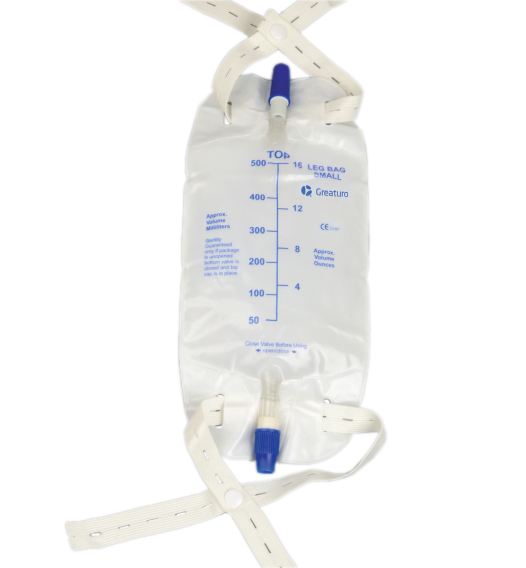Urine Drainage Leg Bag is associated with a number of complications including catheter-associated urinary tract infection (CAUTI), tissue damage, bypassing and blockage. The risk of complications means catheters should only be used after considering other continence management options, and should be removed as soon as clinically appropriate (Loveday et al, 2014).

During the
insertion procedure tissue trauma and poor aseptic technique can lead to CAUTI; this risk continues for as long as the catheter is in place. Risk factors for CAUTI are outlined in Box 1. Appropriate catheter drainage and support devices, as well as hand hygiene and associated infection prevention strategies, can reduce the risk of CAUTI.
Urine Drainage Leg Bag can have a profound effect on patients’ lifestyle and sexual relationships (Prinjha and Chapple, 2013; Royal College of Nursing, 2012) so it is vital that patients are involved in the selection of drainage and support devices, and that their ability to manage these independently is assessed.
Leg drainage bags
Leg bags should be connected to the catheter to create a sterile closed-drainage system (Loveday et al, 2014), and changed in line with manufacturers’ recommendations or when clinically indicated (Loveday et al, 2014). If the bag becomes disconnected from the catheter it should be replaced with a new one immediately.
Leg bags come in a variety of sizes (Fig 1a) including:
- 350ml – a small capacity bag;
- 500ml – the most common choice for daily use;
- 750ml.
The capacity required can be determined by the patient’s urine output.
Leg bags come with three lengths of tubing (Fig 1b):
- Direct inlet – attaches directly to the catheter;
- Short tube;
- Long tube.
Patients should be allowed to decide where they intend to wear their
leg bag (thigh, knee or lower leg) as this will determine the length of the inlet tube used. This can be done via trial and error, and patients may wish to try a variety of products. It is important the leg bag is always positioned below the bladder to maintain urine flow.
Bags come in different shapes, including rectangles and ovals, and some have a fabric back to improve patient comfort when it is in contact with the skin (Dougherty and Lister, 2015).
Two-litre drainage bags
Two-litre capacity bags can be connected to the bottom of leg bags at night. The outlet tap on the leg bag is left open so the urine collects in the larger bag, which should be disposed of daily after use.
Bags should be supported on a stand or support hanger and should not be allowed to rest on the floor as this increases the risk of contamination and infection (Fig 1c, Loveday et al, 2014).
Two-litre bags can also be connected directly to a catheter and can be used post-operatively, if patients are confined to bed or if the use of a leg bag is not appropriate.
